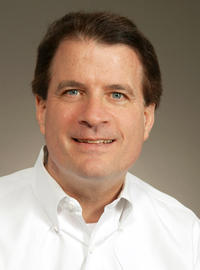
Note: an announcement of the Beal Conjecture prize was on abcnews.com, but their article mistakes the conjecture and other mathematical ideas, so we present the information from the official Beal Conjecture website: http://www.bealconjecture.com/
The Beal Conjecture
Background
Mathematicians have long been intrigued by Pierre Fermat's famous assertion that A^x + B^x = C^x is impossible (as stipulated) and the remark written in the margin of his book that he had a demonstration or "proof". This became known as Fermat's Last Theorem (FLT) despite the lack of a proof. Andrew Wiles proved the relationship in 1994, though everyone agrees that Fermat's proof could not possibly have been the proof discovered by Wiles. Number theorists remain divided when speculating over whether Fermat actually had a proof, or whether he was mistaken. This mystery remains unanswered though the prevailing wisdom is that Fermat was mistaken. This conclusion is based on the fact that thousands of mathematicians have cumulatively spent many millions of hours over the past 350 years searching unsuccessfully for such a proof.
It is easy to see that if A^x + B^x = C^x then either A, B, and C are co-prime or, if not co-prime that any common factor could be divided out of each term until the equation existed with co-prime bases. (Co-prime is synonymous with pairwise relatively prime and means that in a given set of numbers, no two of the numbers share a common factor.)
You could then restate FLT by saying that A^x + B^x = C^x is impossible with co-prime bases. (Yes, it is also impossible without co-prime bases, but non co-prime bases can only exist as a consequence of co-prime bases.)
Beyond Fermat's Last Theorem
No one suspected that A^x + B^y = C^z (note unique exponents) might also be impossible with co-prime bases until a remarkable discovery in 1993 by a Dallas, Texas number theory enthusiast by the name of D. Andrew "Andy" Beal. (Refer to http://www.andrewbeal.com or more information about Andy Beal.) Andy Beal was working on FLT when he began to look at similar equations with independent exponents. He constructed several algorithms to generate solution sets but the very nature of the algorithms he was able to construct required a common factor in the bases. He began to suspect that co-prime bases might be impossible and set out to test his hypothesis by computer. Andy Beal and a colleague programmed 15 computers and after thousands of cumulative hours of operation had checked all variable values through 99. Many solutions were found: all had a common factor in the bases. While certainly not conclusive, Andy Beal now had sufficient reason to share his discovery with the world.
BEAL'S CONJECTURE: If A^x + B^y = C^z, where A, B, C, x, y and z are positive integers and x, y and z are all greater than 2, then A, B and C must have a common prime factor.
Andy Beal wrote many letters to mathematics periodicals and number theorists. Among the replies were two considered responses from number theorists. Dr. Harold Edwards from the department of mathematics at New York University and author of "Fermat's Last Theorem, a genetic introduction to algebraic number theory" confirmed that the discovery was unknown and called it "quite remarkable". Dr. Earl Taft from the department of mathematics at Rutgers University relayed Andy Beal's discovery to Jarell Tunnell who was "an expert on Fermat's Last Theorem", according to Taft's response, and also confirmed that the discovery and conjecture were unknown. There is no known evidence of prior knowledge of Beal's conjecture and all references to it begin after Andy Beal's 1993 discovery and subsequent dissemination of it. The related ABC conjecture hypothesizes that only a finite number of solutions could exist.
Encouraging Others
By offering a cash prize for the proof or disproof of this important number theory relationship, Andy Beal hopes to inspire young minds to think about the equation, think about winning the offered prize, and in the process become more interested in the wonderful study of mathematics. Information regarding the $1,000,000 cash prize that is held in trust by the American Mathematics Society can be obtained at the University of North Texas website: http://www.math.unt.edu/~mauldin/beal.html.